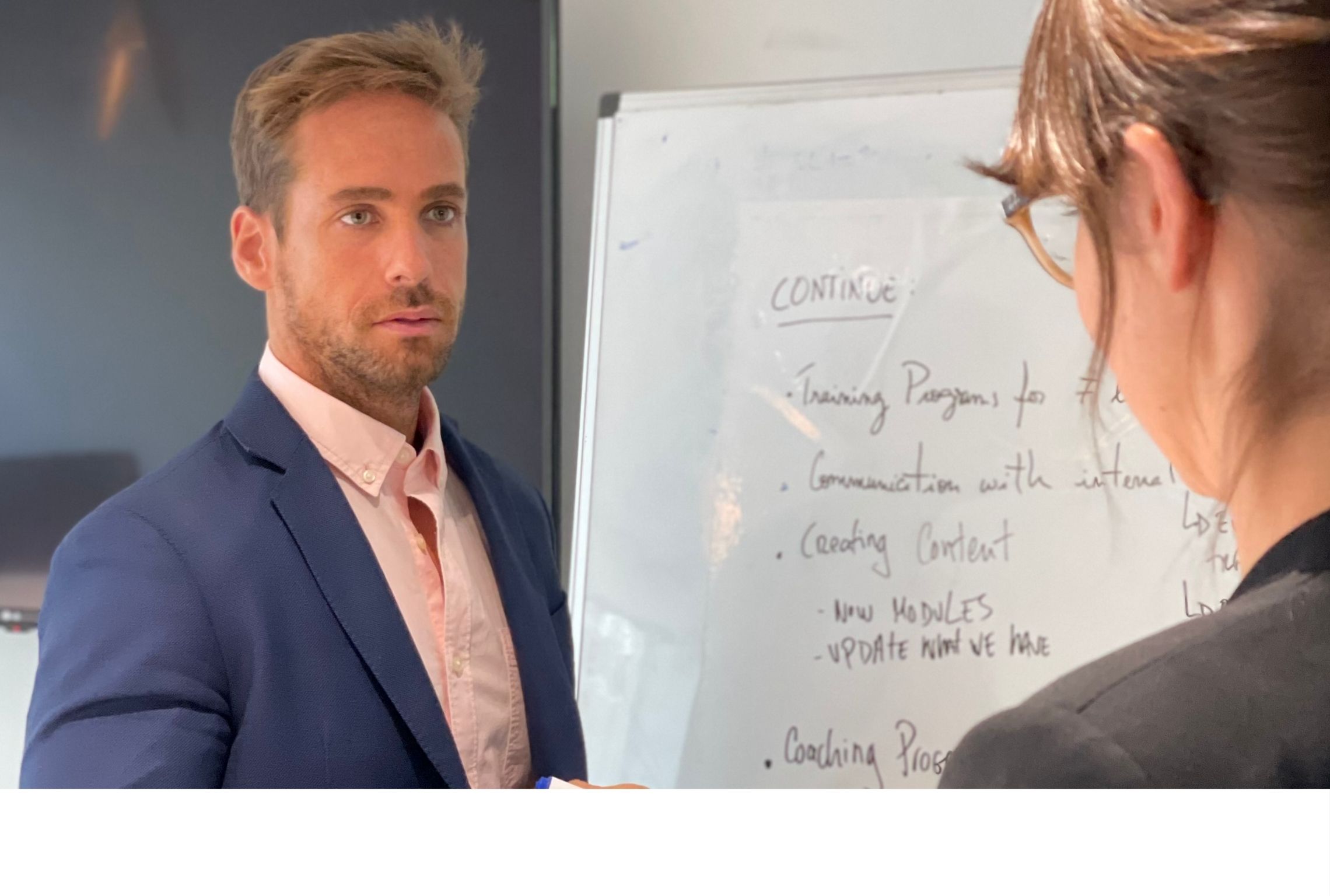How to develop talent in the workplace
Frederico Van Der Kellen, International Career Manager at Prime Group, shares his knowledge and experience with us.
Company Culture
January 27, 2022
6 minutes read

“”
Acquiring and developing employees’ key skills aligned with organizational objectives is the pillar of any company’s sustainability.
Every company with the ambition to thrive and flourish, especially in the most digital Era ever, has to point out its guns to the most valuable asset in its power – its talent. And talking about talent is talking about people. Acquiring and developing employees’ key skills aligned with organizational objectives is the pillar of any company’s sustainability.
But what is talent in the first place? When we include the term in our business glossary what do we mean? How do we see it? How do we measure it? Ultimately, once we understand what it is, we can start thinking about developing it.
After all, prior to the desire and will to develop something, it seems fair that we understand what it is isn’t it?
There’s not just one way to develop talent so it’s not one size fits all. So, although there is a wide range of ways to approach talent, here are 5 good practices that we implement at Prime Group to develop talent.
1. Don’t see talent simply as natural vs acquired
The first step to develop talent in your teams can be to avoid the trap of thinking of it in terms of being innate vs effort and hard work. Both are important! Because if you do treat talent as a completely natural ability, you will risk putting people in boxes and labeling them. Whether if you see the talent at your disposal as a combination of natural aptitudes or not, is not the most crucial issue. Talent can be understood as the speed or rhythm at which we get better at something. Depending on the field, each person takes more or less effort, can be slower or faster at reaching a result. So, see people as different sources of talent for different purposes that can be maximized, rather than focusing on the nature of that talent.
2. Align talent with organizational goals
To reach the most demanding goals, you need the right people. But reaching a goal it’s not just about getting from A to B. It’s about knowing where you start from and if those talented people are aligned with macro goals and with the business strategy. Know your starting point and build from there. Imagine your company – as a goal – plans on working more its employer branding or wants to expand its operation to new markets. This means that developing your people’s skills and aptitudes in those fields will become part of your goal in order to ensure the success of your organization. This will give you direction and structure.
3. Invest in training and coaching programs
Training can come in different shapes and forms. You can have on-the-job training, thematic workshops to develop a specific set of skills or task force, long term training in a controlled environment for people to share inputs and simulate scenarios. The important thing is that you invest in continuous learning and do it consistently so people can implement new tools and enhance their set of skills through everyday interactions.
Additionally, individual and team coaching are valuable strategies to bring out the best of people, materialize their potential and make them more autonomous and accountable. Training or coaching should be linked to performance with measurable outcomes.
4. Establish and Develop leadership plans
Keep developing the leaders you have and start preparing the ones for tomorrow by putting in place a leadership development plan. You can tell a lot about a company by the talent it keeps. In the same way, strong leadership can reflect the culture of an organization. By continuously investing in leadership actions, you will be anticipating and creating solid routes that will ensure the future of your talents.
5. Hire with diversity and inclusion in mind
In the same way that competition is a driver for innovation, diversity can be a driver for performance. Not only with diverse talents, but people with diverse ways of thinking, different views than yours. By hiring only people identical to you, you will be mitigating your chances of having people with competencies that are complementary. If you already have people different from each other in your team, think in an inclusive way and embrace those differences. If you want to go above and beyond, be daring and try having people who question and challenge conventional norms. Teams and organizations with a diverse pool of talent are more likely to thrive financially.
To sum up, taking talent development to the next level is your responsibility. So are the relationships you cultivate.
Developing talent requires an understanding of how people think and act. People are often drawn to the safety of belonging and being part of something bigger than them. Something that truly inspires them not just to do more, but to be more.







